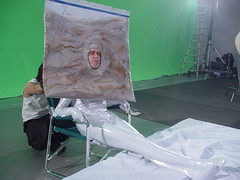For this winter holiday Yoshiko and I went to Nagasaki. I'm just going to show photos and try to explain them. Hope you find these interesting.

Nagasaki is not only beautiful but it's also a fantastic city if your interest is Japanese history or culture.

This is the Alt house located at Glover gardens. Mr. Alt was part of a small European group that helped initiate the Meiji Restoration (overthrowing the shogun and bringing the emperor to power in the 1860's) and Japanese internationalism.

The streets of Nagasaki are criss crossed with stairs and walking courses that allow access to the small neighborhoods sprinkled along the hill sides. Many homes can only be accessed by stair case or walking paths.

This building is a part of a completely recreated Dutch settlement called Degima. The Dutch East India company set up shop in the 1600's in Nagasaki as an international port. Since the Shogun did not permit foreigners into the country the Dutch were forced to stay in Degima and trade from there. However the impact of this small settlement on Japanese history is great.

Meganebashi (Eyeglasses bridge) is part of series of one small stone Chinese style bridge after another, one for each street. Each street ends at a separate hillside Temple.

Visiting Shimabara, an ancient castle town about 80km from Nagasaki. The town is near a volatile volcanic area. There is a constant supply of spring water due to this fact. In 1993 there a was a tremendous eruption that destroyed some of the outlying areas of the city and killed 40 people. This same eruption also created a lava dome that reached an elevation of 1400 meters, making it the tallest mountain in the region.

A village walkway that dates back to the 16oo's features a public watercourse. This part of Shimabara was where the Samurai and other workers for the castle lord resided.

Some water ways in Shimabara 's neighborhoods featured fish ponds that came right up to the home.

Back in Nagasaki; Part of the four kilometer radius of the Nuclear Bomb blast of 1945. A stone gate to a temple was cleaved in half, leaving half standing. The remains were left nearby.


View from an observation tower .

We visited an old temple in Nagasaki that was constructed during the 1700's. Some of the roof tiles and demons were left over so became part of a unique wall.

The styles of temple building in Nagasaki represented the strong Chin Dynasty Chinese influence due to the Chinese community there. Since the Chinese quarter of the city was forbidden to Japanese the only chance for meeting was at Temples.

The final day in Nagasaki Yoshiko and I took a boat trip to the unique and stunning tourist attraction of Gunkan Island. This tiny island became inhabited in the early 1890's due to the discovery of coal.

As Japan industrialized the island population grew. Mitsubishi controlled the operation and created a complete city on the island. Some of the first concrete buildings were produced as family apartments in 1916. At it's peak operation the population density was four times that of Tokyo. The residents lived in tight quarters under a dark sky and blackened ocean.


The island had a movie theater, underground shopping street, k through 9 grade school, a swimming pool and many other amenities. The workers families lived rent free. The island was shut down in 1975 due to lack of efficiency.






















